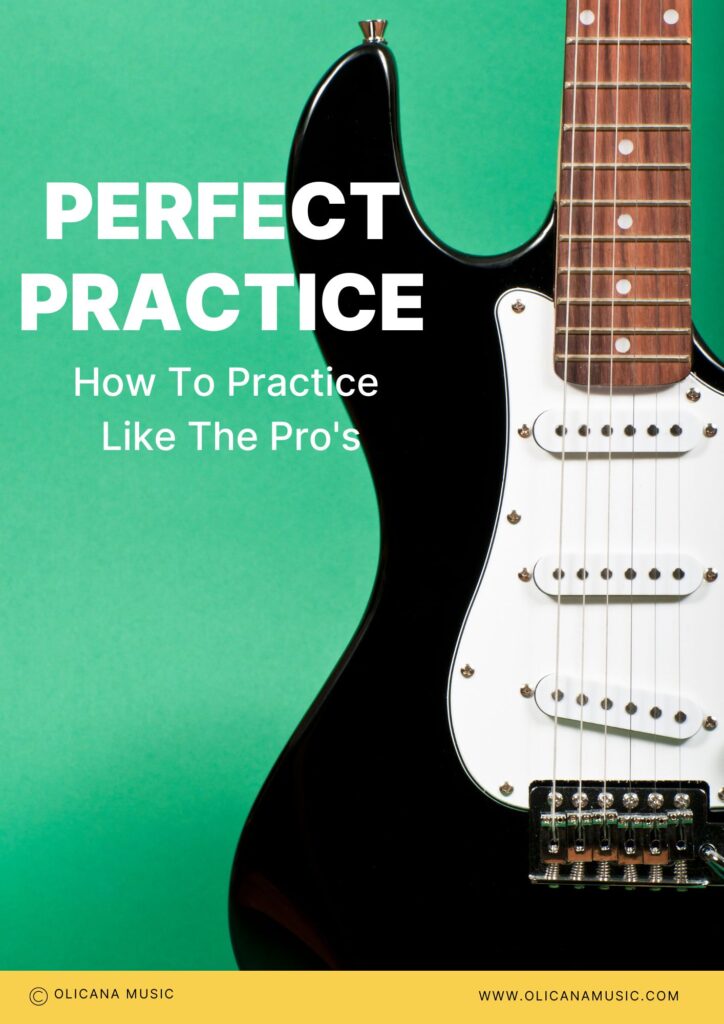Objectives
By the end of the lesson pack you will:
- Understand why mixing major and minor pentatonic scales sounds good.
- Understand when is a good time to switch and mix pentatonic scales.
- How to apply mixing pentatonic scales to a 12 bar blues.
Prerequisites
It would help to know:
- How to improvise with the major pentatonic scale.
- How to improvise with the minor pentatonic scale.
Mixing Major and Minor Pentatonic Scales
As a guitar player you should already be familiar with the minor pentatonic scale. It’s usually the first scale beginners learn, and is essential for vocabulary for most genres of music. If you’re a little more advanced you might have come across the major pentatonic scale. This is like the mirror image to the minor pentatonic scale, it’s major counterpart. If you can improvise a little with both then now is a great time to learn how to mix major and minor pentatonic scales.
Why It Sounds Good
Why does mixing major and minor pentatonic scales sound so great? In short it comes down to tension and release. If you stick to one scale in your improvisation the listener becomes accustomed to the sound of it. There are only five notes in the major pentatonic scale, and all of them are consonant. This is fine but there is little opportunity to create musical drama using the major pentatonic scale alone. The same is also true for the minor pentatonic scale. Although this problem can be mediated with slides, bends, and other articulations, another approach is to switch scales mid solo.
A great example of mixing the major and minor pentatonic scale in action is Eric Clapton’s solo on Crossroads. He starts with the major pentatonic scale for the first four bars, before switching to the minor pentatonic scale on the IV chord. By switching scales he creates contrast for the listener, injecting tension that would otherwise not have been there. This tension is then released when he returns to the major pentatonic scale later in the 12 bar progression. Switching scales creates a cycle of tension and release. It’s this that makes Clapton’s solo sound so good.

When To Switch Scales
If you’re going to try to mix major and minor pentatonic scales it’s useful to understand when it works well, and when it doesn’t. Without going into the theory weeds this trick works great in songs in a major keys, or songs where the key is ambiguous like in blues or rock.
I think of it this way. The major pentatonic scale is an incredibly consonant scale. It sounds great but there is very little tension in it. You can base a solo around this scale and then inject tension by switching to the minor pentatonic scale when you want to ramp up the intensity. This affect sounds bluesy and is a sound that our ears are already culturally accustomed to.
I don’t find this idea works the other way around. You can’t play a solo in minor key using the minor pentatonic scale and throw in the major pentatonic scale for added spice. It just doesn’t sound good in my opinion. I haven’t been able to find an example of it in popular music, but if you know of one please let me know. You should obviously try mixing pentatonic scales in both a major and minor keys yourself, but I think you will find it really only works well in the former.
How To Start
So now you know generally how to mix major and minor pentatonic scales, lets get more specific. As I said earlier, the reason mixing these scales works so well is because it plays with the idea of tension and release. The major pentatonic scale creates areas of release, whilst the minor pentatonic scale creates areas of tension. This idea will help guide you when you improvise.
All chord progressions already contain a contour of tension and release. A simple rule of thumb is to follow the tension and release pattern of the chord progression with your solo. Take the following chord progression for example. It’s a I IV vi V in the key of C (C, F, Am G).
The I chord has very little tension as it is a tonic chord, the IV chord is the sub dominant chord and therefore has more tension than the I chord as it is further away from home base. The vi chord is another tonic chord, bringing us close to home base the tension is released somewhat. Finally we hit the V chord, this is a dominant chord and it is the point at which the chord progression cadences. As such the V chord is the point where the tension of the chord progression peaks, and then releases as we return to I.
Your solo should match the pattern of tension and release in the chord progression. This means using the major pentatonic scale over tonic chords, and introducing the minor pentatonic scale on subdominant, dominant chords, or at the cadence of the chord progression if you want to increase the level of tension.
Lets have a listen to how that would sound. First I’m going to play a solo that does the opposite of what I just said, i’ll use the minor pentatonic scale over the majority of the chord progression, and switch to the major pentatonic scale on the V chord where the chord progression cadences.
What do you think of that? Let’s hear it the other way around, with the major pentatonic scale throughout and minor pentatonic scale on the V chord.
Which do you prefer? For me it’s definitely the second one.
This is the general approach that I like to take when soloing over songs in a major key. I’ll use the major pentatonic scale, following the pattern of tension and release in the chord progression, switching to the minor pentatonic scale when I want to ramp up the tension.
Obviously the cadence is an easy place to start employing this trick. But I think it’s worth experimenting with changing to the minor pentatonic scale with each chord in the progression. This means trying to use it on the I chord, ii chord, iii chord and so on. This will give you an idea of what mixing the scales sounds like in each situation, helping you make better decisions when you improvise.
Exercise – Switching At The Cadence
Exercise – Experimenting With Chords
Teasing The Minor 3rd
The major pentatonic scale is very bland. It’s like someone is forcing you to smile all the time. Art imitates life and music is no different. Real life is not always happy, even the best moments can sometimes be bittersweet. How can you convey this through your music?
The minor third is a great way to do this, by introducing the minor third into your major pentatonic scale (creating the major blues scale) you can tease the listener with a sound that hints that maybe something more is going on. You could play a whole solo using the major pentatonic scale, hinting occasional with the minor third that something more is afoot. Finally at the climax of the solo you switch to the full minor pentatonic scale. This peaks the tension of the solo, before finally setting the listener at ease again by returning to the major pentatonic solo.
This is, in my opinion, when mixing the pentatonic scale is at it’s best. Let’s take a listen to what that sounds like.
Exercise – Teasing The Minor 3rd
Mixing Pentatonic Scales In a 12 Bar Blues
With major keys out of the way, let talks about using this in a blues like Crossroads. The guidelines for a blues are very similar to those in a major key. You do however have a little more flexibility available to you as we’ll discuss in a minute.
The easiest way to start is to use the major pentatonic for the I chord, and the minor pentatonic scale over the IV and V chords. Here’s what that might sound like.
The blues is interesting though because you can actually use either scale over any of the chords in the progression. This means on the I chord you could use major or minor pentatonic, on the IV chord you could use major or minor pentatonic, and on the V chord you can use major or minor pentatonic. You can really choose which scale you want to use when.
There is an important caveat here though. If you choose to use the major pentatonic for the IV or V chord you need to match the root of the scale to that of the chord. For example in an A blues the IV chord is D7 and the V chord is E7. You will need to use D major pentatonic and E major pentatonic respectively if you want to sound authentic.
Let’s take a listen to how it would sound if you were a little more flexible with when you switch scales.
Putting It All Together
Like most things music, less is more. The drama created by mixing major and minor pentatonic scales is the product of surprise. If you switch continually the between the scales the listener will get accustomed to the sound of you switching. The cycle of tension and release will be lost because the listener will be able to predict it. In my opinion it’s better to tease the listener with the minor third before going for the right hook that is the minor pentatonic scale at the climax of the solo.



Ask your questions in the community